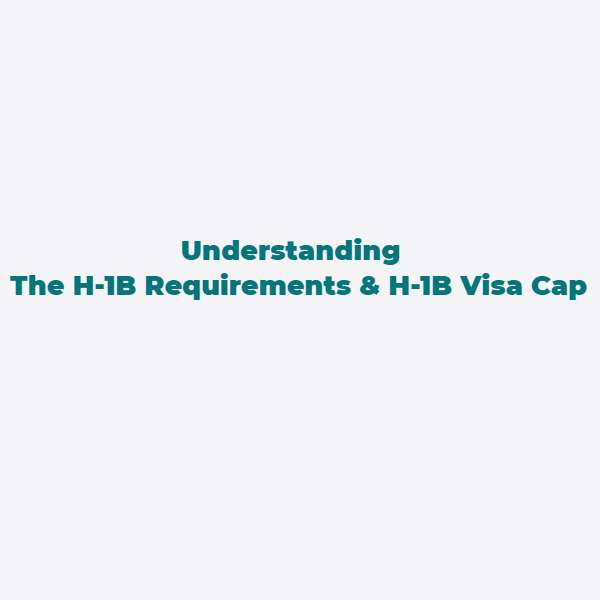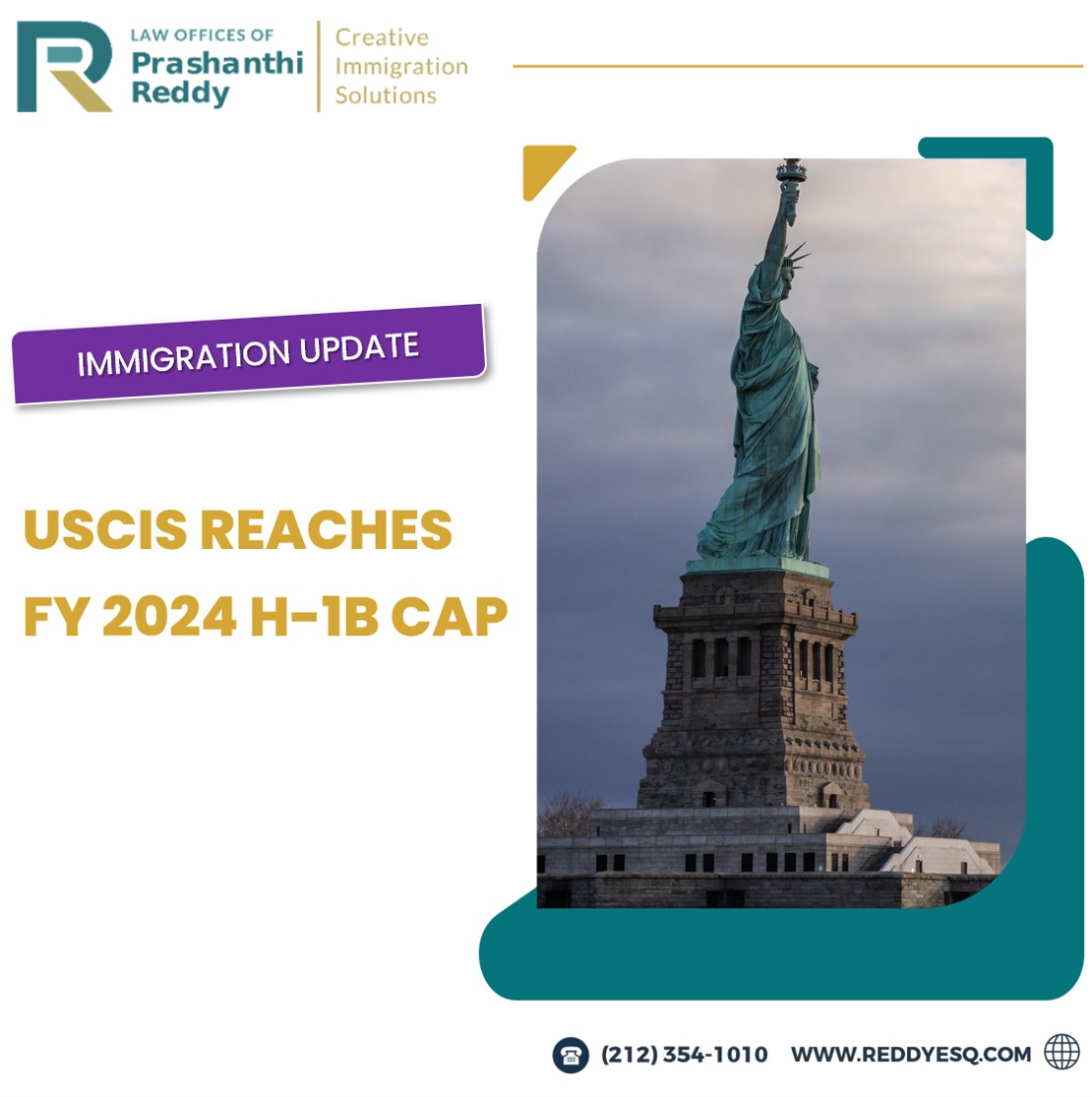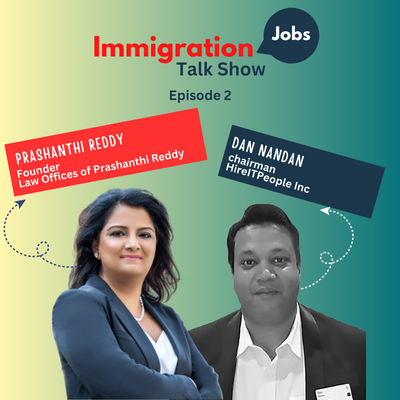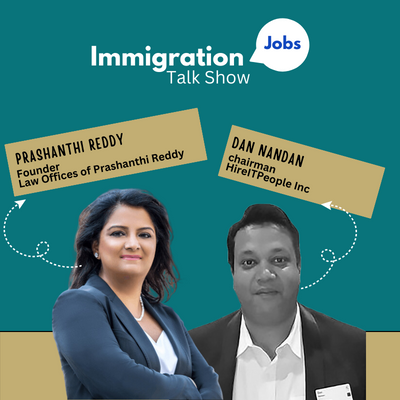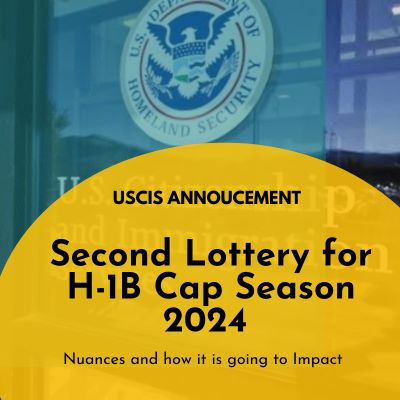The H-1B visa is a non-immigrant visa issued by the United States, and allows U.S. employers to hire foreign employees in specialty occupations. The H-1B visa allows the holder to work in the U.S. under the employer who petitions the visa for 3 years extendable to 6 years.
The H-1b can be extended beyond 6 years as per the American Competitiveness in the 21st Century Act (AC21)
What is a “speciality occupation?”
Basic Definition: Specialty occupations defined as an occupation that requires(a) theoretical and practical application of a body of highly specialized knowledge in a field of human endeavour and (b) attainment of a bachelor’s or higher degree in the specific speciality (or its equivalent) as a minimum for entry into the occupation in the U.S.
These fields of occupation including but are not limited to accounting, architecture, biotechnology, business specialities, chemistry, education, engineering, law, mathematics, medicine and health, physical sciences, social sciences, theology, and the arts.
Characteristics of H-1B Specialty Occupation
In order for a job to be classified as a specialty occupation under USCIS regulations, at least one of the criteria has to be met. These criteria include:
- Bachelor’s or higher degree,or an equivalent is generally the minimum requirement. The field of study of the degree has to be related to the position to be occupied.
- The degree criterion is common to the industry within which the position to be occupied is in, or the position is so unique and complex that only an individual with a degree can perform.
- The employer normally requires an individual with a degree or its equivalent for the position; or
- The nature and requirements of the specific duties of the job is so specialized and complex that the knowledge needed to perform the duties is generally accompanied with the completion of a bachelor’s or higher degree.
H-1B Visa Requirements :
1 – An employer-employee relationship with the petitioning U.S. employer is needed : A valid employer-employee relationship is one in which the employer has the right to hire, pay, fire, supervise and control the employment of the H-1B employee.
Demonstrating an employer-employee relationship as an owner of a petitioning company
Also, a sole owner or a majority shareholder of the petitioning company can demonstrate an employer-employee relationship,if it is proven that the petitioning company has the power to control the beneficiary’s employment. An example is if the preferred shareholders, investors, board of directors, or other factors show that the petitioning company has rights to control the terms and conditions of the employment. These terms and conditions of the employment include those mentioned above such as, the right to hire, pay, fire, supervise, and control the employment of the beneficiary.
Evidence you can submit to distinguish between ownership interest and right to control employment includes
- Capitalization Table.
- Investor rights Agreement.
- Operating agreements.
- Organizational documents.
- Stock purchase Agreement.
- Term Sheet.
- Voting Agreement
2 – A bachelor’s degree higher degree or its equivalent is generally the minimum requirement :
The position that the beneficiary is needed for has to be one that is unique or complex to the extent that a skilled professional with at least a bachelor’s degree in that field can perform.
Proving that the job position requires a degree in the related field
The Occupational Outlook Handbook (OOH) from the Department of Labor (DOL) is used to help determine if the job’s minimum requirement is a degree in the related field. If the Occupational Outlook Handbook (OOH) does not indicate that a degree is the minimum requirement in the related field, you can still provide evidence to validate that the position normally requires a degree in the related field by:
- Providing copies of past position announcements that show that a degree is normally the minimum requirement for the position.
- The description of the petitioning company’s products/services/business, the duties of the position and written opinions from experts confirming that the position is specialized or unique to the extent that a degree in the related field is needed.
- Job listing, letters and/or affidavits from other employers showing that a degree in the related field is required for the parallel positions in similar organizations.
3 – The position or job of the beneficiary has to be a specialty occupation related to the field of study of the beneficiary :
Proving that the degree is related to the specialty occupation
- A thorough description of the exact duties of the position and the tasks performed, the product or service the petitioning company provides, or the specialized or unique nature of the role the beneficiary will perform, and how the degree relates to the role.
- Written opinions from experts confirming that the degree is related to the role the beneficiary is needed to perform.
- Printouts from online resources showing the degree fields normally associated with the occupation.
- The job listing, letters and/or affidavits from other employers showing that a degree in the related field is required for the parallel positions in similar organizations.
Qualifying without at least a bachelor’s degree
It is possible that the position the beneficiary is required to fill does not require a degree. If that is the case, the beneficiary can qualify if:
The beneficiary as an unrestricted state license, or certification or registration that permits the beneficiary to perform the speciality occupation and to be straightaway engaged in that speciality in the state of intended employment.
Or
If the beneficiary has an education, specialized training or work experience in the related field equivalent to the completion of a U.S. bachelor’s or higher degree in the speciality occupation.
4 – Salary of the beneficiary must be at least the actual or prevailing wage for the employee specialty occupation, whichever is higher.
A database is maintained by the DOL (flcadatacenter.com) that includes prevailing wage levels by occupation and work location. Private wage surveys can also be used as long as they meet the criteria for wage surveys.
5 – The H-1B visa petition must be filed at a time when the H-1B visa number is available.
The H-1B visa has an annual numerical limit or a cap. This is 65,000 for each fiscal year. In addition, the H-1B visa can be filed 6 months before the start of the fiscal year, which begins on October 1. TheUnited States Citizenship and Immigration Services (USCIS) exempt thefirst 20,000 petitions filed on behalf of beneficiaries with a U.S. master’s degree or higherfrom the 65,000 cap.
H-1B Visa Cap
The H-1B visa cap is simply the limit to total number of petitions allowed for each fiscal year. As of the fiscal year of 2017, the cap is 65,000 with an exemption to the first 20,000 beneficiaries with an advanced U.S. degree.
Regular H-1B visa cap
The annual cap is 65,000 as already mention. It is also referred to as the general quota/cap or regular quota or non-advanced degree quota/cap.
Advanced Degree Cap
This has an annual cap of 20,000 and applies to first 20,000 petitions filed on behalf of beneficiaries with U.S. master’s degree or higher. Subsequent petitions filed on behalf of beneficiaries with U.S. master’s degree or higher is included as part of the Regular H-1B Visa Cap.
Qualifying for H1B Advanced Degree Cap
To qualify for the Advanced Degree Cap, you must hold a Master’s degree or higher from an United States Institution of Higher Education as per Section 101Ia) of the Higher Education Act of 1965.
Chile-Singapore Cap
This is set aside for applicants from Chile and Singapore and has an annual cap of 6,800.
What are Cap-Exempt Petitions?
There are H-1B visa petitions that are exempted from the H-1B visa cap. These include:
- H1B extension– Filing for an extension of the H-1B visa in order to remain in the U.S.
- H-1 amendment–Filing to change the terms of employment of a current H-1B worker.
- H-1 transfer – Filing to change employers.
- Concurrent H-1 – Filing to allow an H-1B worker to work simultaneously in a second H-1B position.
- If already counted towards the cap, he will not be counted again. As per Section INA 214(g)(7)“Any alien who has already been counted within the 6 years prior to the approval of a petition described in subsection (c), toward the numerical limitations of paragraph (1)(A) shall not again be counted toward those limitations unless the alien would be eligible for a full 6 years of authorized admission at the time the petition is filed. Where multiple petitions are approved for 1 alien, that alien shall be counted only once.”
- Exemption based on field of employment. Some employments are exempted from the H-1B visa cap. These include:
- Nonprofit entities associated with institutions of higher education.
- overnmental or Non Profit research organizations.
- Employment by or at universities and their nonprofit affiliates.
- H1B petitions filed by non-qualifying organizations may still be cap-exempt as long as the employee will be working “at” a qualifying institution.
How does the H-1B visa cap affect companies seeking to hire foreign workers?
Due to the H-1B visa cap, a random selection system commonly known the H-1B lottery is used to select randomly those to be given the H-1B visa when the number of petition exceeds the H-1B cap. This is conducted by the United States Citizenship and Immigration Services (USCIS), if the cap is exceeded for the fiscal year. Firstly, this computer-based random selection is done for the Advanced degree cap. Those who are not picked are added to the regular cap and another computer-based random selection is done to select those who receive the H-1B visa.
This makes it difficult for companies to hire foreign workers as the cap and random selection process is based on chance. For the 2016 fiscal year, the USCIS received 233,000 petitions. The total cap of 85,000 (Regular + Advanced Degree Cap) means more than a half of the applicants were rejected. As there are no domestic workers to do the job and companies cannot sponsor foreign workers for the job, the jobs are often outsourced overseas which leads to the loss of revenues for the United States.
“At the Law Offices of Prashanthi Reddy, PLLC, the majority of our work is employment-based immigration, we are therefore in a unique position to advise our clients on best practices while filing H-1b Visa cases”.

